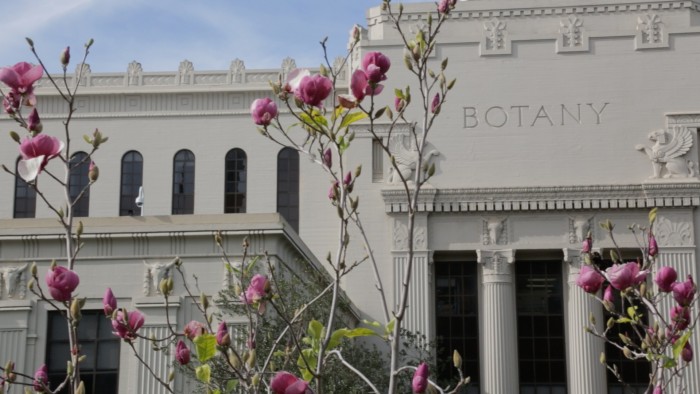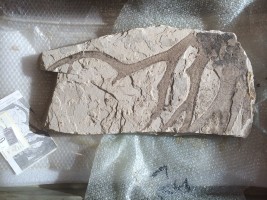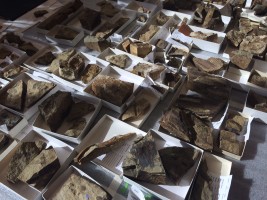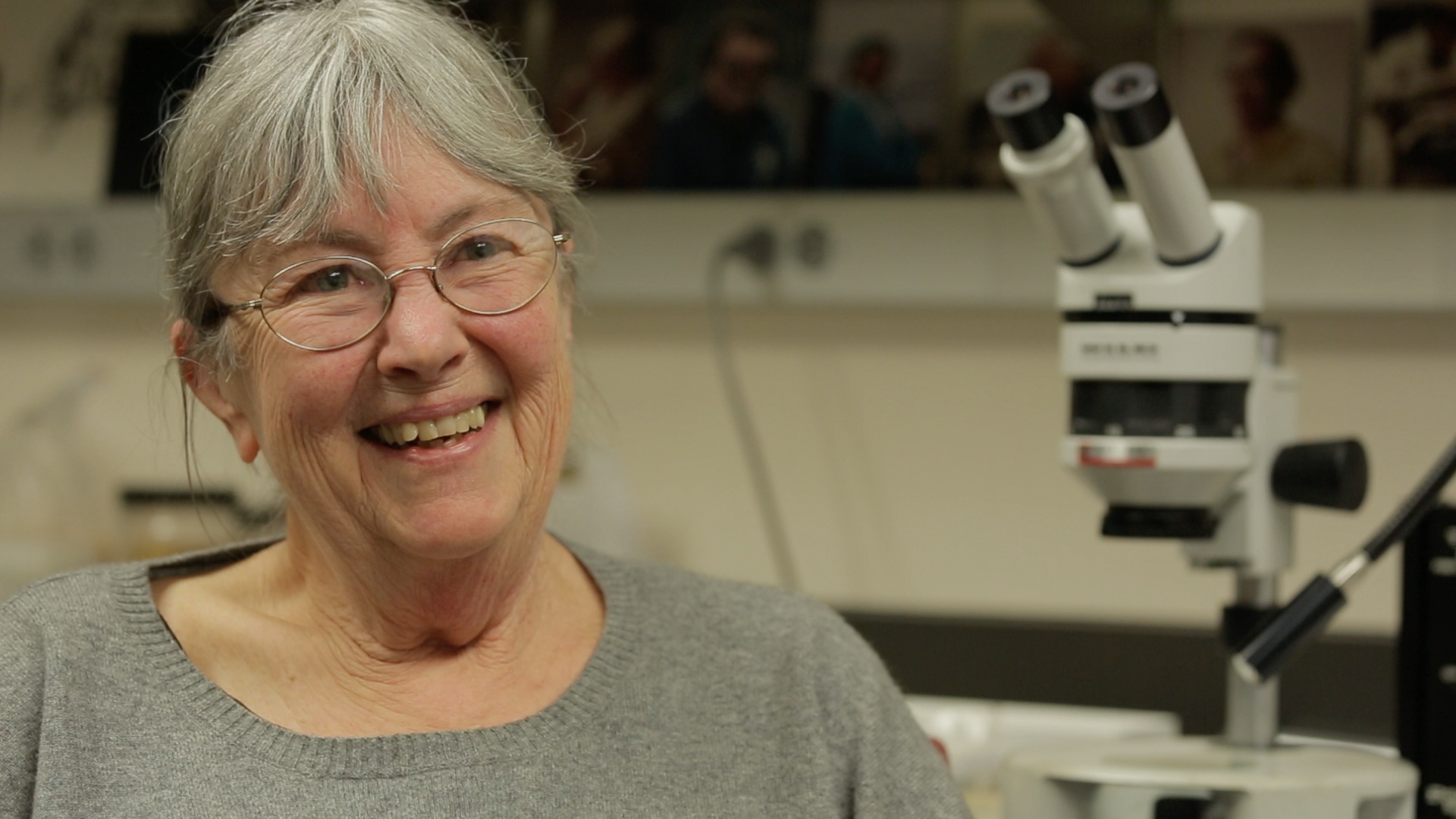Adventures in Berkeley: Part 1, UCMP
By Lexi on April 26, 2015
We met Dr. Cindy Looy of UC Berkeley at GSA in the fall and spoke to her about participating in our film and portrait project. Dr. Looy agreed, with the requirement that we find her a beard that looked like The Dude’s from “The Big Lebowski.” We agreed and our trip in February was planned. What we found out about two weeks before our flight to California was that Dr. Looy had gone above and beyond our expectations for our shoot by not only confirming portraits with the women in her lab, but she got the wheels moving and inspired a total of 32 female geoscientists to participate in The Bearded Lady Project (we’ll have more details about this aspect of our trip in a follow up post).

In two weeks time, we bought 32+ beards, traveled to San Francisco and found ourselves on our first day wandering the University of California Museum of Paleontology (UCMP). Our team was in awe of the expansive collections we were witnessing in the belly of the museum. The UCMP is a research museum, housing fossil collections that are only second to the Smithsonian’s. We had the great pleasure of meeting a number of the museum scientists including Erica Clites, Diane Erwin, Pat Holroyd, and Lisa White. Having only a limited amount of time to conduct background research on these scientists, we had no idea what to expect, which made for very exciting and educational interviews. Underscoring how important access to research museums are to the public and professional community.

Lisa White, the Assistant Director of Education and Public Outreach, described how accessible the UCMP is to it’s UC Berkeley community. She said,
That’s what we are, we’re a research museum. We have a lot of visitors who come and use the collection for research. But I think the greatest thing is the fact that there are students, graduate students, undergraduate students that come and get involved in projects in the museum.
Dr. White explained the importance of a research museum and how, over time, the collections can really revolutionize current theories and practice.
“There’s plenty of data here in the museum that’s really understudied.” She noted, “what we’re able to contribute in the research realm, is that we have all these specimens that many deserve a second look, [for] discovering new approaches to interpreting them.”

The Bearded Lady Project team spent a good portion of our time, wandering around the collections where we were introduced to a variety of fossils by each individual host. The drawers and cabinets reveled fossils from 80 pound shells to microscopic samples held in glass vials. While the museum itself was filled with thousands of interesting clues to the mysteries of the earth, the offices of the scientists were collections unto themselves, housing the history and personal interests of each scientist. In Dr. Carole Hickman’s office, jars of spiral shells sat on her shelves, overlooking a gallery of portraits of colleagues and personal photographs (Dr. Hickman informed us that she was also an avid photographer). We decided the best location to photograph the previously mentioned museum scientists was in their personal spaces, carved out of the basement of the Life Sciences building.
There have been groups who have been called ‘women geologists,’ ‘women-paleontologists,’ ‘women scientists,’ and I have never wanted to belong to anything where you were called a woman scientist. I have always said, ‘I am a woman, and I am a scientist but I am not a woman-scientist.’

The Bearded Lady Project is a creative project that challenges stereotypes, and the women of the UCMP really demonstrate the importance of bringing passion into the workplace. Each scientist travels into the field for their own research projects and they are active within the community inside and outside of the university. One thing that resonated with our crew, no matter where you are in your life, make sure to explore the world around you. If you find something that looks like a fossil, you can visit the scientists at the UCMP, they will help you identify your find.
